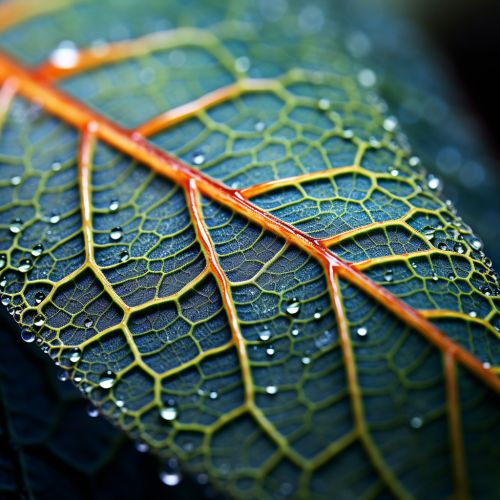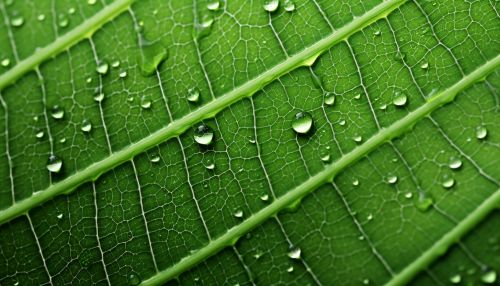The Science of Plant Defensive Chemicals and Herbivore Resistance
Introduction
Plants, unlike animals, cannot physically move to escape their predators. As a result, they have evolved a variety of chemical defenses to deter herbivores. These chemicals, known as secondary metabolites, are not necessary for the plant's basic metabolic functions but play a crucial role in its survival. This article delves into the science behind these plant defensive chemicals and how they contribute to herbivore resistance.
Plant Defensive Chemicals
Plant defensive chemicals, also known as secondary metabolites, are a diverse group of organic compounds produced by plants that are not directly involved in the normal growth, development, or reproduction of the organism. Instead, they serve to protect the plant from herbivore attack.
Types of Defensive Chemicals
There are three main types of defensive chemicals produced by plants: alkaloids, terpenoids, and phenolic compounds.


Alkaloids
Alkaloids are a group of naturally occurring chemical compounds that contain mostly basic nitrogen atoms. They are produced by a large variety of organisms, including bacteria, fungi, plants, and animals, and are part of a group of natural products, also referred to as secondary metabolites. Alkaloids have a wide range of pharmacological activities including antimalarial (e.g., quinine), antiasthma (e.g., ephedrine), anticancer (e.g., homoharringtonine), cholinomimetic (e.g., galantamine), vasodilatory (e.g., vincamine), antiarrhythmic (e.g., quinidine), analgesic (e.g., morphine), antibacterial (e.g., chelerythrine), and antihyperglycemic activities.
Terpenoids
Terpenoids, also known as isoprenoids, are a large and diverse class of naturally occurring organic chemicals similar to terpenes, derived from five-carbon isoprene units assembled and modified in thousands of ways. Most are multicyclic structures with oxygen-containing functional groups. Plants produce terpenoids as part of their normal metabolic processes, but these compounds are often upregulated in response to stress or damage, such as herbivore attack.
Phenolic Compounds
Phenolic compounds are a class of chemical compounds consisting of a hydroxyl group (-OH) directly bonded to an aromatic hydrocarbon group. The simplest of the class is phenol (C6H5OH). Phenolic compounds are widely distributed in the plant kingdom and are ubiquitous in human diets. Phenolic compounds in plants help to provide resistance against pathogens, parasites and predators, and can influence the quality of human and animal foods.
Mechanisms of Action
Plant defensive chemicals can act in several ways to deter herbivores. They can be toxic, reducing the herbivore's survival or reproduction. They can also deter feeding by making the plant less palatable. Some defensive chemicals interfere with the herbivore's digestion, reducing the nutritional value of the plant. Others can attract predators or parasites of the herbivores, indirectly protecting the plant.
Herbivore Resistance
Herbivore resistance in plants is a complex trait that involves a variety of defensive strategies. These include physical defenses, such as thorns and tough leaves, as well as chemical defenses. The type and effectiveness of these defenses can vary widely among plant species, and even among different individuals within a species.
Types of Resistance
There are two main types of herbivore resistance in plants: constitutive resistance and induced resistance.
Constitutive Resistance
Constitutive resistance refers to the defenses that are always present in the plant, regardless of whether or not the plant is under attack. These can include physical defenses, such as thorns or tough leaves, as well as chemical defenses, such as the production of toxic or deterrent secondary metabolites.
Induced Resistance
Induced resistance, on the other hand, is only activated in response to herbivore attack. This can involve the upregulation of defensive chemicals, the production of proteins that interfere with the herbivore's digestion, or the release of volatile compounds that attract the herbivore's natural enemies.
Evolution of Resistance
The evolution of herbivore resistance in plants is thought to be driven by the coevolution of plants and their herbivores. As herbivores evolve ways to overcome the plant's defenses, the plants in turn evolve more effective defenses. This 'arms race' can lead to a high degree of specialization, with certain plant species evolving defenses that are particularly effective against their most common herbivores.
Conclusion
The science of plant defensive chemicals and herbivore resistance is a complex and fascinating field. It involves the study of a wide range of chemical compounds, the mechanisms by which they deter herbivores, and the ways in which these defenses have evolved over time. Understanding these processes can provide insights into the ecology and evolution of plant-herbivore interactions, and can also have practical applications in agriculture and horticulture.
